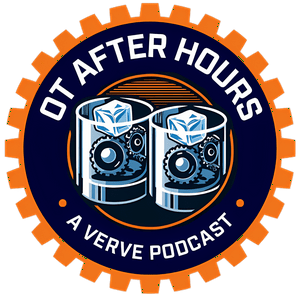Asset Inventory
In this episode, we explore the challenges and best practices for identifying and inventorying assets in operational technology (OT) environments. Join host Ken Kully, Systems Support Lead at Verve Industrial, along with guests Lance Lamont, Andrew Wintermeyer, Tyler Bergman, and Rick Herzing, as they discuss how to establish trust, safely discover assets, and navigate network complexities without disrupting operations. Key Takeaways Establishing Trust & Engagement: Successful asset identification starts with building relationships with site personnel, including ICS engineers and facility managers. Safe Asset Discovery Techniques: Using non-disruptive methods like passive network monitoring, ARP table collection, and targeted scans is key in OT networks. Common Challenges: Mismatched documentation, unknown legacy devices, and unconventional network setups often complicate the process. Collaboration is Crucial: Teams at Verve integrate expertise from research, engineering, and cybersecurity to ensure efficient and secure asset inventorying. Continuous Monitoring & Adaptation: The process doesn’t end with identification—maintaining an up-to-date inventory is an ongoing effort. Listener Q&A Want to ask a question for the experts at Verve to answer? Let us know! Timestamps 00:00 – Introduction and sound check 01:10 – Welcome back to Season 2 of OT After Hours 03:14 – What is the core functionality of Verve in OT environments? 06:45 – Trust-building and engaging with OT personnel 12:30 – Real-world surprises: Unexpected device discoveries 18:05 – How Verve safely identifies assets without disrupting operations 27:38 – Leveraging Verve’s capabilities for accurate inventorying 41:11 – Importance of communication and customer engagement 46:53 – The evolving role of Verve and IT-OT integration Guest Information Lance Lamont – Lead, Special Projects & Protocols, Verve Industrial Andrew Wintermeyer – Lead, Device & Integration Team, Verve Industrial Tyler Bergman – Lead, Field Deployment Team, Verve Industrial Rick Herzing – OT Systems Support Analyst, Verve Industrial Subscribe Follow and Subscribe Get in Touch LinkedIn | YouTube | Twitter/X | Contact Verve I Listener Q&A
